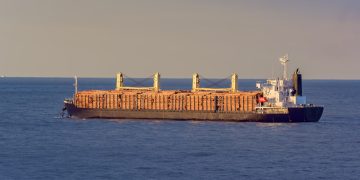It is currently estimated that operators will be faced with an additional $11 billion fuel bill related to the switchover to low-sulphur fuel oil (LSFO) next year, according to the latest container market outlook of Drewry.
Drewry expects global port throughput to rise by 2.6% in 2019, down from the previous 3.0% expectation.
Moreover, there is still no clear guidance on just how much additional cost it will cause on the industry and the recent oil-price spikes due to the drone attacks on Saudi oil facilities further complicate the scenario.
It was also added that the degree of compensation that carriers receive will dictate the level of supply disruption next year.
In a statement on Monday, 7 October, the senior manager, container research at Drewry and editor of the Container Forecaster, Simon Heaney stated that their working assumption is that carriers will be in the position to recover the cost this time, to the point that there will be no major disruption of supply.
Nevertheless, it was further added that there will be much less focus by carriers on service quality and more on cost cutting. Indeed, Simon Heaney said that if carriers fall short by a significant margin, lines would quickly dust off the decade-old playbook that was used to see them through the global financial crash.
[smlsubform prepend=”GET THE SAFETY4SEA IN YOUR INBOX!” showname=false emailtxt=”” emailholder=”Enter your email address” showsubmit=true submittxt=”Submit” jsthanks=false thankyou=”Thank you for subscribing to our mailing list”]
“In that scenario, carriers will try to protect cash flows by restricting capacity as best they can, through a combination of measures, including further slow-steaming, more blank sailings, and off-hiring of chartered vessels,” he added.
It is highly likely, according to Drewry, that failure to recover from the larger fuel bill is going to make owners have more vessels built-in with exhaust scrubbers in order to keep up running on the cheaper high-sulphur oil; but can also increase relevant demolitions.
In fact, Simon Heaney said that “the worst case scenario, when most shipping lines cannot operate close to breakeven and some potentially face bankruptcy, would actually be a far quicker route to rebalancing the market than the current plodding track. It would take a very brave carrier to want such a turn of events, but for those that could be sure of coming through the other side, after some initial pain the rewards would be far greater.”
He also noted that
Most shippers accept that they will have to pay more but they rightly expect any increase to be justified with a credible and trusted mechanism – in other words the ball is very much in the carriers’ court.
































































